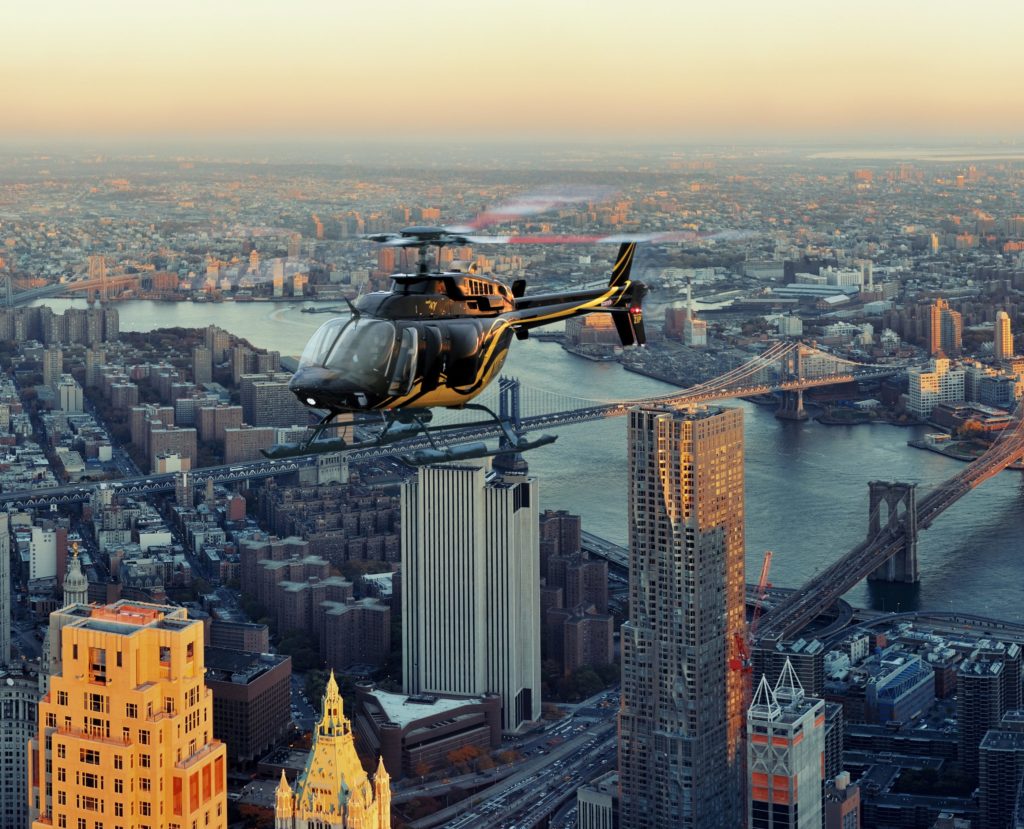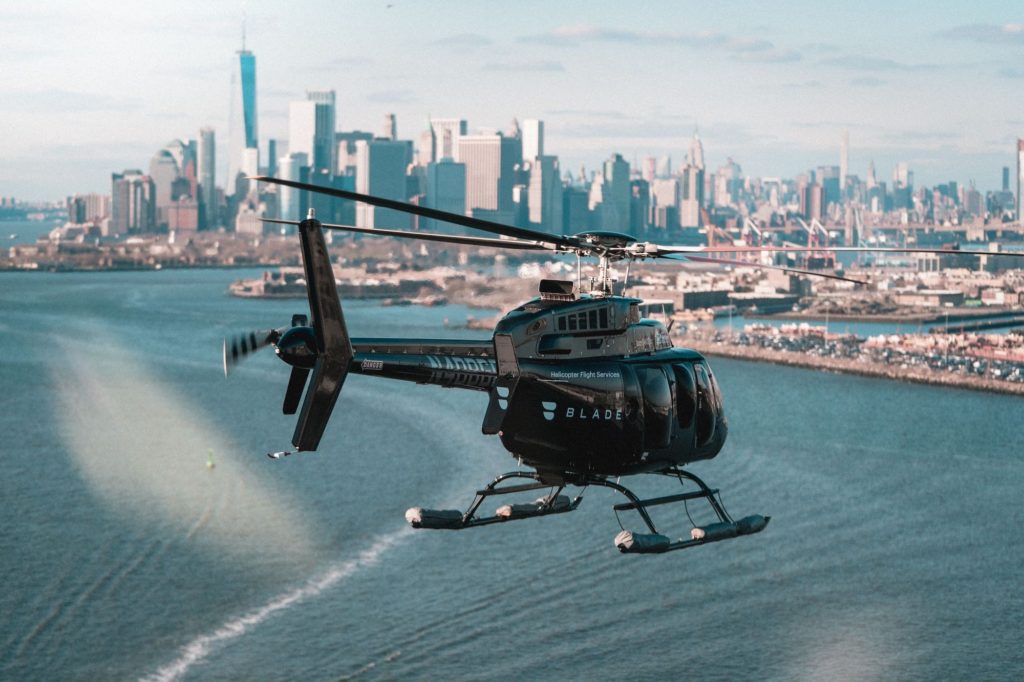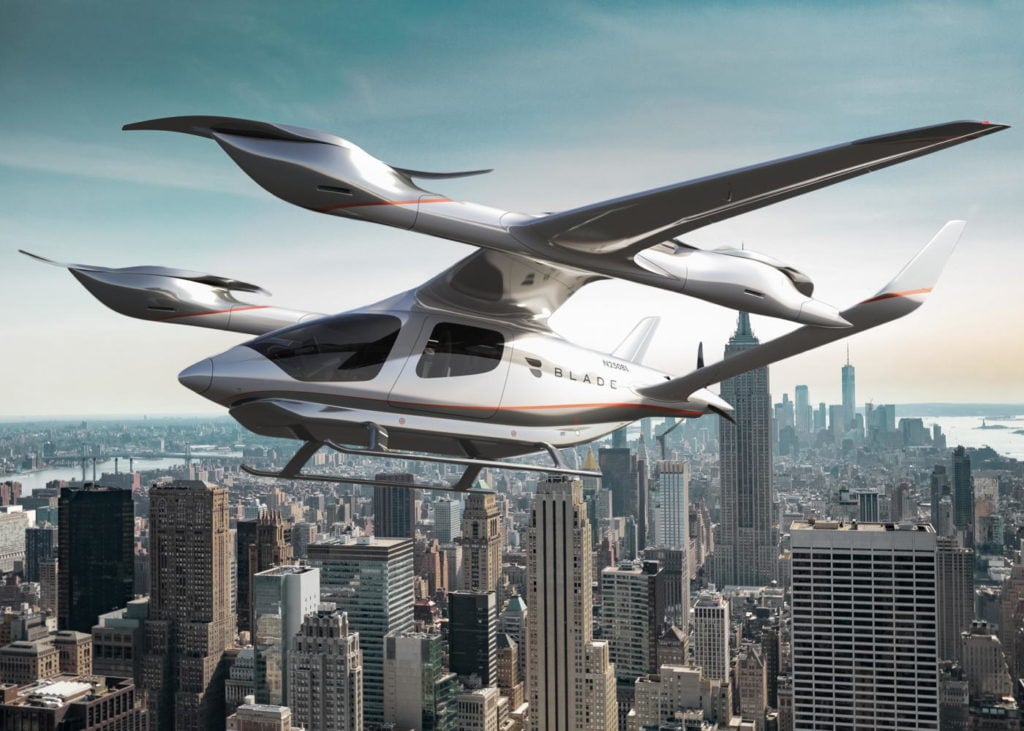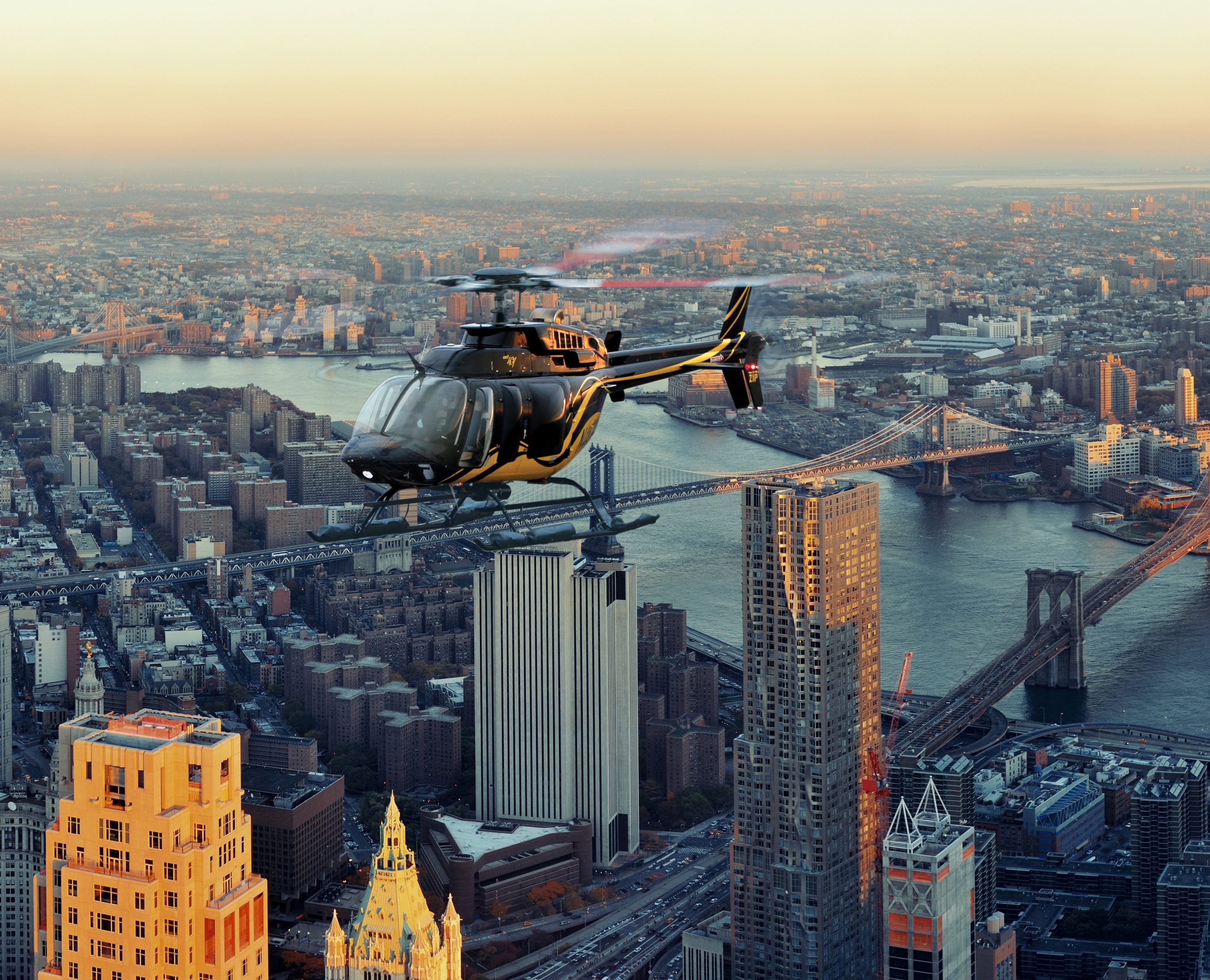The volume of helicopter flights in New York is currently under legislative fire — both at the city and the state level — mainly due to noise concerns from a small number of vocal individuals, according to the National Business Aviation Association (NBAA).

As eVTOL aircraft emerge on the scene, they promise to be much quieter than helicopters, but the volume of eVTOL traffic within cities like New York are expected to be much larger than helicopter flight volume as advanced air mobility (AAM) scales in the future. And there are serious concerns that these current legal disputes may negatively affect existing vertical infrastructure and the rollout of eVTOLs in New York and beyond in the years to come.
First, a look at the “Stop the Chop Act,” passed by the New York state assembly in early June 2022. In the near future, the state governor will either veto the bill or sign it into law.
This piece of legislation would make it legal for anyone to sue a pilot, flight department, line service personnel or company employee operating in the state for alleged helicopter noise pollution, even if the operation is complying with federal laws and regulations.
Not surprisingly, the NBAA opposes the bill, along with the General Aviation Manufacturers Association, the Eastern Region Helicopter Council (ERHC), the Helicopter Association International, the New York Aviation Management Association and the National Air Transportation Association.
These groups sent a letter to the governor noting that this act would have far-reaching negative impacts on aviation business across the state — and that it contravenes federal law.
“As written, the act operates as an access restriction at the West 30th Street heliport,” the groups state in the letter. “But that is prohibited by the federal law governing the implementation of noise and access restrictions, the Airport Noise and Capacity Act of 1990.”
On Sept 20, the NBAA expanded its call to action against the bill, urging anyone who conducts business or operations in the state of New York to request a veto.
Meanwhile, also in June, a New York City Council bill was proposed that would eliminate “non-essential” helicopter flights from city-owned heliports. NBAA northeast regional director Brittany Davies said her organization has reached out to local aviation groups to discuss this bill, but “at this stage, we haven’t yet been given the opportunity to testify or send documents.”

Types of flights — and their origin
Melissa Tomkiel, president of Blade Air Mobility, provided some further context about these developments.
“Since 2014, Blade has been offering urban air mobility [UAM] flights as an alternative to some of the most congested ground routes in and around New York City,” Tomkiel explained. “Our airport service allows fliers to travel between Manhattan and the major New York City commercial airports in approximately seven minutes, for as little as $95 per flight for those who purchase an airport pass — less than the price of ground transportation which often takes upward of 90 minutes.”
Tomkiel noted that Blade, along with other UAM firms operating in and around the city, flies exclusively on established “noise abatement” routes, which in Manhattan are primarily over water.
However, helicopter tour companies that fly tourists into the city from New Jersey and other locations do not abide by these noise abatement routes.
“It’s important that both residents and legislators understand that these tour companies don’t operate out of New York City, so they would not be impacted by restrictions on New York City heliports, and thus, the proposed legislation would not have its intended effect on reducing noise complaints from these operations,” Tomkiel said.
However, many at the city and state level have not yet grasped the complexities of the New York City UAM ecosystem or the unintended consequences of various legislative proposals that only allow “essential flights” at New York City heliports — and have thus attempted to address noise complaints through broad-based reductions in flight volumes at the three New York city heliports.
New York City itself controls two of these, and the state the other.
She further explained that “with a reduction in or elimination of passenger flights, the costs of organ transportation would skyrocket and the existing heliports — which rely on revenues from both passenger and medical flights — would collapse. This is the very same infrastructure that is necessary to support the transition to quiet and emission-free eVTOL aircraft when they are certified by the U.S. Federal Aviation Administration (FAA) in the near future. If this infrastructure were to go away, it would be extremely difficult to bring back. We are trying to build an understanding that heliports are crucial to the present and future competitiveness of New York City as a leading global city. Step one is preserving the infrastructure we already have.”
“Over half of Blade’s business are time-sensitive MediMobility flights,” Tomkiel said. “In Manhattan, these entail the transport of human organs and doctors to New York City hospitals for emergency transplants. We utilize the same aircraft to provide both passenger and medical services, which allows us to provide substantial cost and time savings for hospitals and, most importantly, significantly improve outcomes for patients and their families. Unfortunately, by drawing a line between medical and commuter flights, legislators are taking an extremely short-sighted approach and failing to understand that the UAM ecosystem in New York City could not financially survive without the symbiotic relationship between passenger and medical flights.”

Competitive edge
Alex Gertsen, NBAA director of airports and ground infrastructure, agreed that reduction in UAM helicopter flight volume in the state and city of New York will directly jeopardize the financial sustainability of aviation in the state and city.
“New York is so congested, so to impede the ‘onramp,’ if you will, to the third dimension and not support future eVTOL flights will definitely reduce the competitiveness of New York compared to other cities,” he said. “If New York’s three heliports are lost, it will be very challenging to get them back or to get new vertiports built. And I think that if New York’s heliports are shut down, leaders in other cities could also follow suit.”
Stifling eVTOL infrastructure would be very short-sighted for U.S. cities, in Gertsen’s view.
“eVTOLs will enable us to grow as a country, to move goods and provide services more efficiently, to better address emergency medical needs, to better deal with natural disasters,” he said. “We are sympathetic to those experiencing the noise, but we are advocating to keep the volume of flights using New York’s three heliports the same for the good of the public. As eVTOLs arrive, the public is going to realize huge benefits.”
As Eve Air Mobility and Beta Technologies have existing partnerships with Blade, it’s likely their eVTOL aircraft will operate in New York in the future. With regard to noise, Eve co-CEO Andre Stein noted that his firm’s eVTOL “has a completely different design from helicopters” and simulations shows its noise footprint to be “approximately 90% lower” than equivalent helicopters.
The legal dimension
NBAA legal counsel Jol Silversmith reported that the noise complaints that have been received at the state and city levels are from a small number of people. While NBAA fully appreciates these complaints, he said both the state bill and proposed city bill are legally problematic.
“There is a web of federal regulations that prevent states and municipalities from regulating airspace, and for good reason,” he explained. “We can’t have piecemeal laws within or between states if the country’s aviation system is going to function. We’ve recently had the governor of Hawaii sign a bill regulating helicopter routes — against the advisement of many, including those in the governor’s office — and that bill is illegal. We have good legal grounds to fight that bill and in New York, but it will not be easy in New York City in my view. It all depends on leaders understanding the issues and whether they have the desire to take New York City in the future, whether they understand that stifling the foundation for eVTOL technology is going to hold the city back. They need to realize eVTOLs are coming and make a plan. Having a plan, with goals and how to get there, will take the anxiety out of it. And we also need more public education events and outreach. There is so much learned at public events.”
There is also a lawsuit challenging a drone law in New York City, which could have an impact on the future of eVTOL flights.
“Drone operators want to be able to initiate flights from anywhere — not just airports — and there has been a preliminary ruling that this is legal,” Silversmith said. “However, a final ruling is yet to come, and the judge and other parties involved may not realize this ruling could potentially be applied to where eVTOLs can take off and land, and the siting of eVTOL vertiports. We may want to submit a brief, but we have to examine the issue further.”
Looking forward
Like Silversmith, Gertsen conceded that ultimately, the future of eVTOLs in New York is in the hands of the elected officials. “They must decide how they are going to address the noise complaints,” he said, “and we will see if that solution will stifle or lay the foundation for everyone across the city, state and beyond to benefit from eVTOL. It would be a huge missed opportunity for the U.S. as a country to not be a leader in this sector.”
For his part, Vertical Flight Society executive director Mike Hirschberg reiterated that vertical flight aircraft already provide important services to communities, such as saving lives, helping make business happen and providing unique services — and said “we hope that open-minded communities will see the compelling capabilities of eVTOL aircraft as a ‘must have’ for their citizens.”





